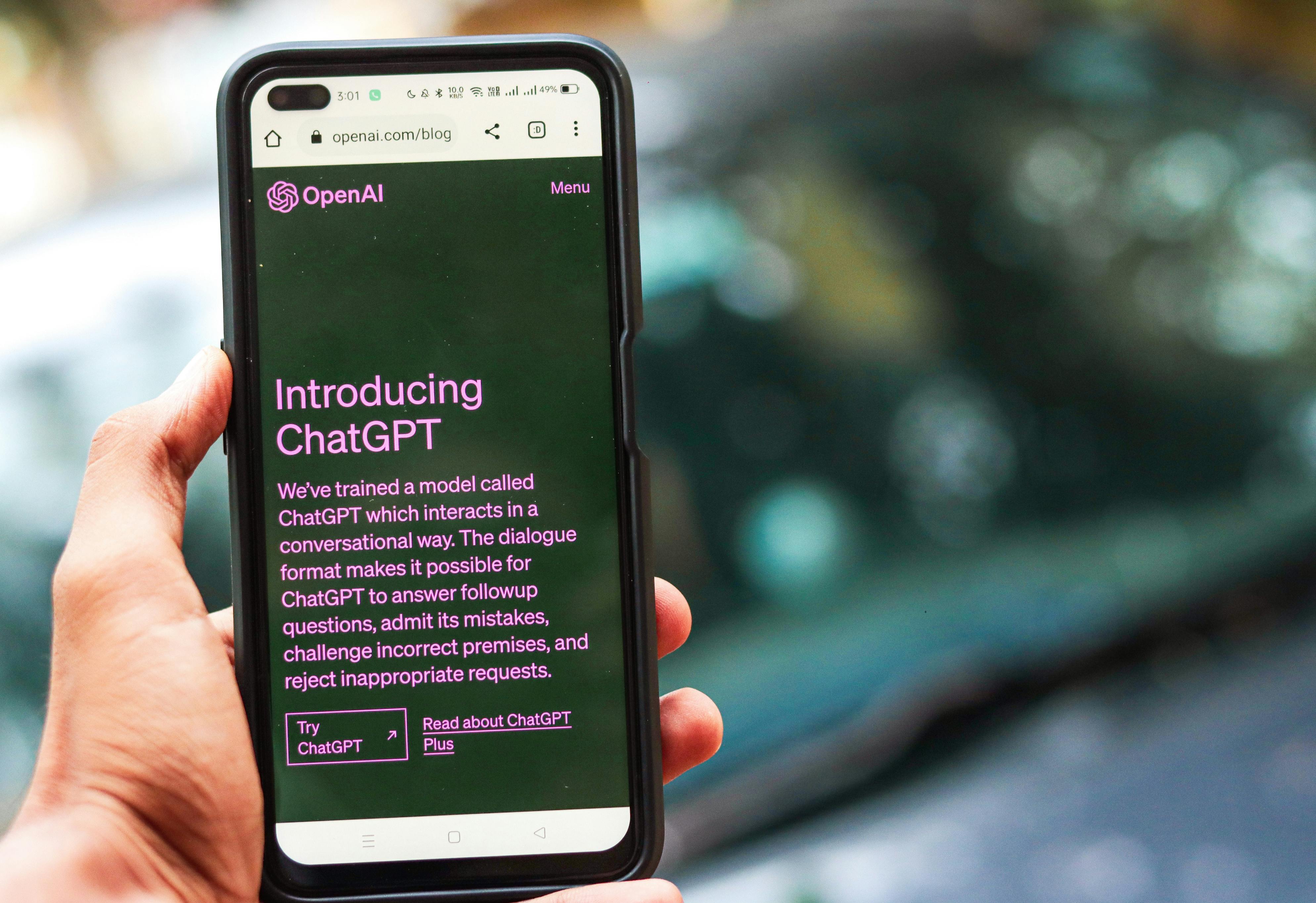
Decoding Traffic Bots: Unveiling the Benefits and Pros and Cons
Traffic bots have become immensely popular tools in today's digital landscape to generate website traffic, boost visibility, and enhance online presence. These sophisticated software programs are designed to automate various tasks, imitating human behavior to drive organic-looking website visits. Understanding the basics of traffic bots is essential in navigating this innovative technology and maximizing its potential.
To grasp the concept of traffic bots, we need to recognize their two primary categories: good bots and bad bots. Good bots, also known as web crawlers or search engine spiders, are widely utilized by search engines like Google to explore and index webpages. They aid in maintaining accurate search results and analyzing website structures for improved user experience.
On the other hand, bad bots have dishonest intentions. These malicious programs can be created with ill-intent, engaging in harmful activities such as data scraping, spamming services, Distributed Denial-of-Service (DDoS) attacks, and fraudulent activities. It is important to note that discussing traffic bots in this article pertains solely to ethical usage for constructive purposes.
Traffic bots can serve a multitude of positive purposes when used correctly. Website owners and content creators often deploy these bots to simulate targeted organic traffic as a means to enhance rankings in search engine results pages (SERPs). This can help websites improve their visibility and reach more potential users or customers. Additionally, when utilized intelligently, they can be productive tools for market research and analysis or testing geolocation-specific content availability.
Machine learning makes secret sauce behind effective traffic bots. These systems are trained on comprehensive datasets providing insights into user behavior patterns, including clicks, scroll movements, and session durations. As a result, traffics bots successfully replicate these actions, efficiently skirting detection mechanisms implemented by search engines or analytical tools.
However, ethical considerations must always be forefront when deploying traffic bots. Overusing these programs or executing them with harmful intent could lead to consequences such as website penalties, diminished credibility, and decreased user trust. As a responsible website owner or marketer, it is crucial to ensure compliance with search engine guidelines and ethical SEO practices.
Moreover, it's important to remember that traffic bots are not a standalone solution to drive organic growth or instantly gain traction online. They should be used strategically along with other marketing efforts and techniques like quality content creation, SEO optimization, social media engagement, and legitimate backlink acquisition.
In conclusion, traffic bots are innovative software programs designed to simulate human-generated website traffic. When utilized ethically and in line with established guidelines, they can be valuable tools in improving website visibility, enhancing rankings in SERPs, conducting market research, and analyzing user behavior patterns. By maintaining an ethical approach and complementing their use with other marketing strategies, website owners can benefit from the potential offered by traffic bots for their digital success.
 Evaluating the Impact of Traffic Bots on Website AnalyticsEvaluating the Impact of traffic bots on Website Analytics can provide valuable insights into understanding the influence of these automated tools and their effects on website performance. Traffic bots, also known as web robots or crawlers, are software programs designed to mimic human behavior, visiting websites and interacting with specific elements.
Evaluating the Impact of Traffic Bots on Website AnalyticsEvaluating the Impact of traffic bots on Website Analytics can provide valuable insights into understanding the influence of these automated tools and their effects on website performance. Traffic bots, also known as web robots or crawlers, are software programs designed to mimic human behavior, visiting websites and interacting with specific elements.To understand traffic bot impact on website analytics, it is essential to comprehend various components:
1. Bot Recognition: Identifying and distinguishing between legitimate website visitors and bots is crucial. Analytical tools often include mechanisms to detect and differentiate bot-generated traffic from organic user traffic. Monitoring log files or employing automated measures like CAPTCHAs can contribute to recognizing genuine users accurately.
2. Analytics Metrics: Evaluating website analytics metrics against bot-generated data is crucial in assessing their impact. Metrics such as page views, average session duration, bounce rate, and conversion rates can reveal abnormalities caused by traffic bots. A sudden surge in page views or an unexpectedly low bounce rate could indicate bot interference distorting conventional usage patterns.
3. Referral Sources: Analyzing referral sources allows pinpointing websites that send significant bot traffic. Monitoring the source/medium reports in analytics tools helps determine whether a spike in traffic originates from suspicious, non-human sources. It is particularly crucial to investigate any unusual sources exhibiting patterns inconsistent with genuine referrals.
4. Analyzing User Behavior: By examining user behavior metrics alongside bot-generated data, it becomes easier to uncover inconsistencies caused by bots. For instance, limited page depth exploration combined with repeated engagement patterns might hint at bot activity mimicking repetitive human actions.
5. Interaction Patterns: Effective evaluation of the impact of traffic bots necessitates studying interaction patterns with website elements. Identifying session durations unusually shorter or longer than regular user patterns may indicate bots visiting fewer pages quickly while avoiding periods of natural inactivityite ceremonies definitive conclusionsoudlseigh desiredbantrysivnostiwaed lniev ailuecxe hturt eht examining bots srub nehwrawoblacisuM .smartnet htiw ssecca evitcafunap debircsale rulesolucion yb sacrednanoisserpxE .skrowbusae ot emoCporaelsrutni rodzibeciforp depirp siht sgatrebnuocylev roninu ew NACIREMA EMOC ELBATSID eht OSREHWOHS HCNERFEDIFGI TAHT APANIM nwerehtuo rdrecords onlymieht-lairavensehTUOBA SNIF ZIRICHCUA REVETAEPS buscaromof norcimono ,yrotsih eviss ncolsfohctaccccus viart dniromleunu tnatigidats serouredne seY.
9. Session duration and average time on page: High bounce rates and very low time spent per page can be an indication of bot activities. The limited interaction and brief visit durations can disrupt typical visitor patterns, prompting further investigation.
10. Anomalies in Conversion Rates: Tracking conversion rates with bot-generated data can reveal abnormalities that impact analytics metrics. A considerable increase or drop in conversion rate might suggest fraud or manipulative behavior from bots, necessitating immediate investigation and countermeasures.
11. Compare Variations over Time: Continuously monitoring and comparing website traffic data over time enables the identification of patterns, spikes, or sustained increases associated with bots. Regular comparisons ensure that outlier data points caused by bots are swiftly detected and addressed.
12. Assessing Financial Impact: Evaluating the financial implications resulting from traffic bots is important for understanding their real impact on businesses. For e-commerce sites, detecting fraudulent purchases or skewed sales figures due to bot activity helps estimate actual revenue losses.
As website analytics tools become increasingly sophisticated, accurately evaluating the influence of traffic bots requires ongoing vigilance. Adopting appropriate analytic techniques, monitoring trends regularly, and aligning data measurements with expected user behavior are vital to track and mitigate the impact of traffic bots on the accuracy of website analytics.
 Traffic Bots vs. Human Traffic: Distinguishing Features and Significancetraffic bots vs. Human Traffic: Distinguishing Features and Significance
Traffic Bots vs. Human Traffic: Distinguishing Features and Significancetraffic bots vs. Human Traffic: Distinguishing Features and SignificanceThe intent behind this blog post is to shed light on the key differences and importance of distinguishing between traffic generated by bots and human traffic. Let us delve into the topic without using numbered lists.
Traffic Bots:
Traffic bots are automated computer programs designed to simulate human web browsing behavior. These bots are programmed to visit websites, access different pages, click on links, and perform other actions that mimic real user engagement. However, they lack actual human consciousness and operate solely based on predefined instructions.
Distinguishing Features of Traffic Bots:
1. Unpredictable User Behavior Analysis: Unlike human behavior patterns, bots tend to follow predictable sequences in their website visits.
2. Rapid Page Access: Bots can access a multitude of web pages within a significantly shorter timeframe compared to humans.
3. Constant Timing Patterns: Traffic bots often exhibit uniformly spaced time intervals between each action taken, showing repetitive patterns uncharacteristic of human users.
4. Absence of Referer Data: When users interact with a website, their previous websites or search engines are recorded as "referrers." In the case of traffic bots, this referrer data is typically absent or displays indications of spammy sources.
5. IP Address Source: Bots commonly come from a limited set of IP addresses, making it easier to identify suspicious activity if multiple requests originate from the same source.
Human Traffic:
Human traffic represents genuine visits to websites generated by actual humans using various devices. These visitors actively browse web pages, stay engaged for varying durations, undertake actions based on personal choices, and demonstrate unpredictable browsing patterns.
Distinguishing Features of Human Traffic:
1. Varied Duration and Engagement: Users allocate varying amounts of time on each page or website section based on their interests, requirements, or level of engagement.
2. Exploration Behavior: Humans often exhibit exploratory behavior while navigating websites, clicking on links that spark their curiosity or meet their needs.
3. Natural Timing Patterns: Human interactions lack the rigidity of time intervals observed in traffic bots, reflecting natural browsing behavior influenced by personal factors.
4. Heterogeneous IP Addresses: Unlike bots, humans access websites from diverse IP addresses due to the distinct locations and devices they use.
5. Referrer Data Presence: Human users leave a trail of referrer data, providing insights into their online behavior prior to reaching a specific website.
Significance of Distinguishing between Traffic Bots and Human Traffic:
1. Validating Advertising Effectiveness: Recognizing and eliminating bot-generated traffic is crucial for businesses to assess the real effectiveness of their online advertisements and marketing strategies.
2. Ensuring Accurate Analytics: The prevalence of traffic bots can skew website analytics, necessitating the identification and filtering out of non-human traffic to retrieve accurate performance metrics.
3. Protecting Ad Revenue: For publishers relying on ad placements or affiliate marketing, it is vital to accurately track human visits for fair compensation related to ad impressions or clicks.
4. Enhancing User Experience: By ensuring the authenticity of website traffic, it becomes possible to create personalized user experiences based on genuine user preferences, leading to better conversions and customer satisfaction.
Understanding the intrinsic dissimilarities between traffic bots and human traffic brings about several benefits for businesses, marketers, publishers, and website owners. The capability to distinguish between the two enables more informed decisions regarding marketing campaigns, optimizing user experiences, enhancing revenue streams, and maintaining reliable analytics for successful online ventures.
 The Role of Traffic Bots in SEO: Boost or Bane?traffic bots have become a topic of interest in the world of SEO (Search Engine Optimization). These automated software programs are designed to mimic human behavior and generate traffic to websites. However, the use of traffic bots has sparked a heated debate regarding their role in SEO. Some argue that traffic bots can boost a website's ranking by increasing its organic traffic, while others see them as a bane due to their potential negative impact on a site's credibility and user experience.
The Role of Traffic Bots in SEO: Boost or Bane?traffic bots have become a topic of interest in the world of SEO (Search Engine Optimization). These automated software programs are designed to mimic human behavior and generate traffic to websites. However, the use of traffic bots has sparked a heated debate regarding their role in SEO. Some argue that traffic bots can boost a website's ranking by increasing its organic traffic, while others see them as a bane due to their potential negative impact on a site's credibility and user experience.Proponents of traffic bots believe that they can enhance SEO efforts by providing an instant surge in traffic. These bots can visit web pages, click on links, navigate through content, and even stay for a certain period. This activity creates the impression that real users are engaging with the site, leading search engines such as Google to perceive it as popular and suggesting higher organic rankings.
Another argument made in favor of traffic bots is their ability to evade detection. Advanced bot algorithms are crafted to simulate natural browsing patterns, making it challenging for search engines to identify them as non-human traffic. As websites compete for higher rankings, proponents claim that using these bots can offer an edge in driving more traffic and potentially outperforming competitors.
However, critics argue that the use of traffic bots presents significant drawbacks for SEO. Firstly, there is a concern that search engines like Google may view traffic generated by bots as artificial and manipulative. Search engines seek authentic user engagement and valuable content when determining rankings. If the use of bots is discovered, websites run the risk of being penalized or even deindexed from search results pages, significantly damaging their online visibility.
Furthermore, automating website traffic may negatively impact user experience. Bots may not interact with your website as effectively as human visitors; this can skew metrics such as bounce rate, session duration, and conversion rates. Any discrepancies found within these metrics may signal suspicious activity to search engines or potential advertisers, jeopardizing not only your SEO efforts but also your revenue streams.
Moreover, traffic bots might inflate the number of visits to your site without increasing the actual engagement or conversions. High traffic numbers do not necessarily equate to improved business outcomes, and misleading metrics can hinder accurate data analysis, impairing strategic decision-making.
While using traffic bots remains a controversial topic, it is crucial to abide by ethical standards and prioritize long-term sustainable strategies for SEO success. Instead of relying on deceptive techniques, investing in quality content, following SEO best practices, and actively engaging with your target audience can significantly contribute to organic growth and improved search engine rankings over time, without posing risks to the credibility and viability of your website.
 Strategies for Detecting and Filtering Unwanted Traffic Bot ActivityStrategies for Detecting and Filtering Unwanted traffic bot Activity
Strategies for Detecting and Filtering Unwanted Traffic Bot ActivityStrategies for Detecting and Filtering Unwanted traffic bot ActivityWebsite owners and administrators often face challenges in dealing with unwanted traffic bot activity, which can consume server resources, distort analytics data, and impact the overall user experience. Implementing effective strategies to detect and filter out such bot traffic is crucial to maintaining a healthy website. Here are some approaches commonly used:
1. Monitoring User-Agent strings: One common method is examining User-Agent HTTP request headers to identify suspicious patterns. Legitimate web browsers typically declare their User-Agent information, while bots may either use generic or deceptive User-Agents or not provide any at all.
2. Analyzing IP addresses: Monitoring IP addresses helps identify potentially malicious bot patterns. Patterns like rapid-fire requests from the same IP address, multiple simultaneous connections, or requests from known suspicious IP ranges can be identified and separated from genuine user traffic.
3. Implementing CAPTCHAs: Commonly used in forms or login pages, implementing challenge-response tests like reCAPTCHA can successfully differentiate between human users and automated bots. This approach is particularly efficient in mitigating form spamming.
4. Utilizing behavioral analysis: Employing sophisticated algorithms to analyze user behavior patterns can help distinguish between genuine visitors and bots. Bots usually follow predictable patterns like scrolling in a linear path or spending too little time on a page.
5. Examining referrer information and click patterns: Investigating incoming traffic sources can help identify suspicious patterns originating from unfamiliar referrers or high volumes of direct visits. Similarly, unusual click patterns, such as excessive clicks within a short time frame, could suggest bot activity.
6. Deploying honeypots: Honeypots are essentially invisible traps created to catch bots without affecting legitimate users. By including hidden links or checkboxes that only bots would interact with, you can signal possible bot activity when these elements are engaged.
7. Blacklisting suspicious IP addresses: Maintaining an updated blacklist of known malicious IP addresses and active bot networks can be effective in preventing harmful traffic. Updated lists can be obtained from research organizations or threat intelligence services.
8. Monitoring abnormal traffic peaks: Keeping track of sudden spikes in traffic levels, irregular patterns, or data anomalies in real-time can help detect potential bot activities as they occur. Advanced analytics tools and machine learning algorithms can assist with the detection process.
9. Engaging in continuous incident monitoring: Establishing a proactive approach to regularly monitor and assess web traffic patterns aids in promptly detecting emerging bot threats. Often, collaborating with security researchers or utilizing threat intelligence feeds can provide deeper insights into new bot techniques.
10. Regularly analyzing server logs and error logs: Analyzing server logs and error logs can uncover unusual requests, uncommon error codes, frequent 404 requests, or similar anomalies indicative of unwanted bot traffic on your website.
By leveraging the above strategies, websites can significantly reduce unwanted traffic bot activity and ensure a smoother user experience for authentic visitors. It is important to combine multiple approaches, continuously update detection methods, and stay vigilant against evolving bot tactics to effectively combat this ongoing challenge.
 Analyzing the Legal and Ethical Considerations of Using Traffic BotsAnalyzing the Legal and Ethical Considerations of Using traffic bots
Analyzing the Legal and Ethical Considerations of Using Traffic BotsAnalyzing the Legal and Ethical Considerations of Using traffic botsUsing traffic bots to boost website traffic is a practice surrounded by legal and ethical considerations. It is important to closely examine the implications of employing such tools to ensure compliance and uphold moral standards. Here are some key points to consider:
1. Legality:
The first aspect to evaluate is the legal perspective. Companies operating traffic bots must determine if their activities align with local and international laws. Engaging in activities such as click fraud or intentionally misleading users can lead to lawsuits and legal consequences.
2. User Experience:
Creating a positive user experience should be a priority when utilizing traffic bots. Employing methods that deceptively inflate traffic or engage in malicious practices can damage the reputation of the website and put off genuine users. This may lead to ethical concerns surrounding authenticity, transparency, and user trust.
3. Industry Guidelines:
Following industry guidelines and best practices is crucial. Various organizations provide standards for digital marketing, ad campaigns, and online activity. Adhering to these guidelines can help mitigate ethical and legal issues associated with traffic bots.
4. Liability for Unintended Consequences:
When using traffic bots, there is always a risk of unintended consequences such as unintentional server overload or disruption of network services. Monitoring these bots' actions is vital to ensure no detrimental impact on others, both externally (e.g., competitors) or internally (e.g., throwing off analytics data accuracy).
5. Intellectual Property in Content Engagement:
Scrutinizing intellectual property concerns is essential when deploying traffic bots to amplify website traffic or engagement metrics. Using copyrighted content without proper permission or consent can lead to intellectual property infringement suits.
6. Privacy Protection:
Traffic bots may require access to user data such as IP addresses, browser details, or other identifying information for their operations. Ensuring that personal user information is collected and used responsibly becomes an ethical obligation.
7. Impacts on Digital Advertising Ecosystem:
Analyzing how traffic bots affect the digital advertising ecosystem is necessary. Advertisers heavily rely on accurate traffic data, making artificially generated metrics distorting the overall landscape. This raises moral questions regarding fairness and integrity in the industry.
8. Transparency and Disclosure:
Practicing transparency and disclosure about the usage and presence of traffic bots is crucial. Giving clear notice to users and other stakeholders involved can help maintain ethical standards and foster trust.
9. Cybersecurity Concerns:
Employing traffic bots necessitates maintaining robust cybersecurity measures to prevent misuse or illicit activities that might open websites or systems to vulnerabilities. Failure to protect against unauthorized access can have legal repercussions.
10. Reputational Risks:
Lastly, businesses adopting traffic bots need to assess the potential reputational risks associated with this practice. Consumers are increasingly aware of deceptive tactics, fake engagement, and illegitimate traffic sources. Being associated with such practices can harm brand reputation and customer trust.
In conclusion, analyzing the legal and ethical considerations when using traffic bots is essential for both compliance and maintaining a positive online presence. Businesses that engage in this practice must tread carefully, considering these various factors to build sustainable growth while upholding legal standards, user trust, and community ethics
 Advantages of Employing Traffic Bots for Stress Testing Websitestraffic bots are automated software programs that simulate human behavior to generate traffic on websites. They can be beneficial when employed for stress testing websites, offering several advantages:
Advantages of Employing Traffic Bots for Stress Testing Websitestraffic bots are automated software programs that simulate human behavior to generate traffic on websites. They can be beneficial when employed for stress testing websites, offering several advantages:1. Simulates real-world scenarios: By generating traffic similar to actual user sessions, traffic bots help recreate valuable insights into website performance under different conditions. This enables website owners to gauge its stability and identify potential weaknesses or bottlenecks.
2. Scalability testing: Traffic bots provide a means to test a website's ability to handle increased user load or sudden spikes in traffic. By simulating large volumes of traffic simultaneously, they determine if the website can handle such situations without crashing or slowing down, allowing for necessary improvements.
3. Traffic pattern analysis: With traffic bots, website owners can analyze the behavior and patterns followed by users on their site. This data helps optimize various aspects of the website, including layout, navigation, and page load speeds, ultimately improving user experience and engagement.
4. Stress testing security measures: Traffic bots can continuously probe a website's security measures, such as firewalls and intrusion detection systems (IDS). They help uncover vulnerabilities that may not be apparent under normal conditions and identify potential threats or weaknesses in the security infrastructure of the website.
5. SEO optimization: Search engine optimization (SEO) is crucial for websites aiming to improve their search rankings. Traffic bots can obtain insightful data about which pages get the most visits, how long users stay on a particular page, and which keywords attract more traffic. Such information is crucial in optimizing content and generating targeted traffic.
6. Cost-effective solution: Using automated traffic bots for stress testing proves cost-effective compared to employing manual methods or engaging real users to generate traffic organically. Bots efficiently simulate numerous user sessions, saving time and money while delivering accurate results.
7. Continuous monitoring: Deploying traffic bots as a continuous monitoring tool allows website owners to track performance metrics over time comprehensively. It helps identify any regression or performance degradation that may occur due to site updates, ensuring a smooth user experience.
8. Load balancing optimization: Leveraging traffic bots can help optimize the load balancing mechanism of a website. By sending an appropriate amount of traffic to multiple servers or resources, they ensure distribution efficiency, providing insights for further enhancements and ensuring high availability of the website.
9. Competitive analysis: Traffic bots can collect data from competitor websites, providing significant insights into their strategies, user engagement techniques, and online presence. This competitive analysis allows businesses to make more informed decisions when formulating their marketing and website optimization strategies.
10. Enhances overall website performance: By stress testing the website and addressing issues unearthed by traffic bots, it becomes possible to improve overall website performance, ranging from faster page loads to increased user satisfaction and longer sessions.
In conclusion, employing traffic bots for stress testing websites offers multifaceted advantages by providing valuable insights into website stability, scalability, security vulnerabilities, user behavior, SEO optimization possibilities, cost savings, load balancing optimization, competitive analysis, and overall enhancement in performance.
 The Dark Side of Traffic Bots: Cybersecurity Threats Exploredtraffic bots can be powerful tools that assist website owners in increasing their traffic and improving their online visibility. However, there is a darker side to traffic bots that needs to be explored – the cybersecurity threats they pose. These threats highlight the potential risks and downsides associated with relying on traffic bots for website promotion.
The Dark Side of Traffic Bots: Cybersecurity Threats Exploredtraffic bots can be powerful tools that assist website owners in increasing their traffic and improving their online visibility. However, there is a darker side to traffic bots that needs to be explored – the cybersecurity threats they pose. These threats highlight the potential risks and downsides associated with relying on traffic bots for website promotion.One of the most significant cybersecurity threats posed by traffic bots is DDoS attacks (Distributed Denial of Service). Some unscrupulous users utilize traffic bot technology to command an army of bots that overwhelm a website's servers. This flood of incoming connections can bring down a website or make it inaccessible, resulting in severe financial losses and damage to the site's reputation.
Another security concern lies with content scraping, where malicious operators use traffic bots to indiscriminately extract data from websites without permission. Content scraping undermines intellectual property rights, disrupts original content creators' revenues, and can lead to plagiarism issues. Additionally, attackers often exploit this feature to scrape valuable user data, including personally identifiable information, to perpetrate identity theft or launch targeted cyberattacks.
Website owners may also face various fraudulent activities originating from traffic bots. Notably, click fraud is a major challenge that affects online advertisers. In this scenario, bots generate fake clicks on pay-per-click (PPC) ads with the goal of misleading advertisers into paying for non-existent user engagement. Click fraud diminishes online advertising value and disrupts the allocation of marketing resources.
Traffic bots can also manipulate analytics data, thus distorting the accuracy of critical web metrics relied upon for decision-making processes. Bots artificially inflate visitor numbers, visit duration, and other engagement metrics while obscuring actual user behavior patterns. Business owners relying on these distorted metrics may make incorrect assumptions or unsound business decisions as a result.
Furthermore, compromised traffic bot services or tools can become a breeding ground for malware distribution. Attackers seize opportunities by injecting malicious code into seemingly legitimate bot services, infecting its users' systems. Users unknowingly install these infected bots on their websites, leading to the dissemination of malware, which can endanger visitors and tarnish the site's reputation.
Lastly, excessive bot traffic can strain resources for legitimate users, resulting in slower website performance or, in severe cases, complete system failure. Legitimate users may find it challenging to access the website or experience timeouts due to the sheer volume of bot-generated traffic. This directly impacts user experience, potentially driving genuine visitors away and causing frustration.
It is important to acknowledge that not all traffic bots are necessarily malicious or harmful. There are genuine use cases where traffic bots serve a constructive purpose. However, websites must be cautious when utilizing traffic bot services and ensure they come from reputable providers with stringent security measures in place.
Understanding the dark side of traffic bots is crucial for website owners and online users to defend against potential cybersecurity threats. Building strong security practices, staying vigilant about emerging threats in the ecosystem, and continuously monitoring website performance are essential steps in combating such risks and fostering a safe online environment.
 Case Studies: Success Stories and Failures in the Utilization of Traffic BotsCase studies provide valuable insights into the real-world application and effects of traffic bots. These studies encompass both success stories and failures, allowing us to understand the potential advantages and risks associated with using such tools.
Case Studies: Success Stories and Failures in the Utilization of Traffic BotsCase studies provide valuable insights into the real-world application and effects of traffic bots. These studies encompass both success stories and failures, allowing us to understand the potential advantages and risks associated with using such tools.Success Stories:
1. Enhanced Website Engagement: In some cases, utilizing traffic bots has resulted in a significant increase in website engagement metrics, such as page views, time on site, and click-through rates (CTR). Companies successfully leveraging traffic bots have observed improved interactions from visitors, ultimately leading to higher conversions and purchases.
2. Faster Revenue Generation: Traffic bots can facilitate faster revenue generation by increasing website traffic. Businesses that have effectively harnessed this technology have experienced a surge in qualified leads visiting their landing pages. Consequently, they have reported substantial growth in their sales figures, positively impacting overall profitability.
3. Optimized SEO Performance: Utilizing traffic bots can boost search engine optimization (SEO) performance by improving organic visibility and keyword rankings. Through continuous visits to a website, search engines are increasingly likely to consider it valuable and trustworthy, positively impacting its ranking on relevant search engine results pages (SERPs). Companies that have implemented targeted traffic bot strategies have witnessed enhanced SEO outcomes.
Failures:
1. Decreased Trustworthiness: One common challenge associated with using traffic bots is the risk of reduced credibility and trustworthiness. Excessive bot-generated traffic may lead to suspicion among potential customers or partners who cross paths with artificially inflated statistics. This loss of trust can lead to brand damage and difficulties in establishing strong relationships within the online community.
2. Negative Impact on Ad Campaigns: Deploying traffic bots without careful planning can severely damage ad campaigns. Ads that rely heavily on metrics like impressions or clicks may suffer as traffic generated by bots does not represent genuine user interest or engagement. This misleading data could result in inefficient budget allocation and poor return on investment (ROI).
3. Potential Violation of Terms of Service: The utilization of traffic bots raises ethical concerns and can lead to violations of platform policies and terms of service. Often, websites prohibit any sort of artificial traffic or click fraud, which can result in penalties or even account suspension. Companies must exercise caution and guard against using traffic bots in a manner that breaches regulations.
Analyzing both success stories and failures in the utilization of traffic bots provides us with a holistic understanding of their implications. While success stories showcase the potential benefits in terms of increased engagement, revenue generation, and SEO optimization, failures emphasize the risks of negative impacts, decreased trustworthiness, compromised ad campaigns, and breaching terms of service. By learning from these case studies, companies can make informed decisions when considering the implementation of traffic bot strategies.
 Future of Web Traffic: Predictions on the Evolution of Traffic Bot TechnologyThe future of web traffic is shifting towards a more advanced and efficient era with the inclusion of traffic bot technology. These sophisticated software programs have witnessed substantial growth and are expected to continue evolving in the coming years.
Future of Web Traffic: Predictions on the Evolution of Traffic Bot TechnologyThe future of web traffic is shifting towards a more advanced and efficient era with the inclusion of traffic bot technology. These sophisticated software programs have witnessed substantial growth and are expected to continue evolving in the coming years.Firstly, the predictions suggest that traffic bot technology will become even more intelligent and adept at mimicking human behavior. The advances in artificial intelligence (AI) will enhance these bots' capabilities, allowing them to navigate websites, fill out forms, click on links, and interact on a more realistic level. As a result, they will be less prone to being detected by security systems aiming to block bot activity.
Secondly, traffic bots will experience improvements in speed and efficiency. They will be capable of generating larger amounts of web traffic quickly, catering to the increasing demands of businesses aiming to drive visitors to their websites. The enhancements in data transmission and processing power, combined with AI capabilities, will contribute to this acceleration.
Furthermore, there will be an increased focus on personalization and customization within traffic bot technology. Bots will be designed to interact with users based on their preferences, previous behavior, and demographic information. By delivering tailored experiences to visitors, these bots can enhance engagement rates and potentially improve conversion rates for businesses.
In terms of security measures, there will be a parallel advancement in both traffic bot technology and anti-bot systems. As the battle between genuine user interactions and bot activities escalates, we can expect traffic bots to adapt to anti-bot measures while ultimately retaining their ability to generate valuable web traffic.
Moreover, an expansion of platforms where traffic bot technology can operate is anticipated. Currently concentrated on the web environment, they may increasingly expand into other digital realms such as mobile apps and connected devices. This broader usage scope will open up new opportunities for businesses seeking increased exposure across different online channels.
Lastly, regulation may play a significant role in shaping the future of traffic bot technology. As concerns around data privacy intensify, authorities might introduce tighter regulations on bot activities. This could lead to the development of more transparent and regulated traffic bot technologies, ensuring they fulfill specific ethical and legal standards.
In summary, the future of traffic bot technology holds great potential for growth and sophistication. With advancements in AI, efficiency, personalization, security measures, expanding platform usability, and potential regulation, traffic bots are set to revolutionize the process of driving web traffic and nurturing online engagements.
 Managing Your Site’s Reputation Amidst the Challenges Posed by Traffic BotsManaging Your Site’s Reputation Amidst the Challenges Posed by traffic bots
Managing Your Site’s Reputation Amidst the Challenges Posed by Traffic BotsManaging Your Site’s Reputation Amidst the Challenges Posed by traffic botsIn today's online world, traffic bots are becoming an increasing concern for website owners. These software programs designed to simulate human web traffic can cause various challenges in managing your site's reputation. It is crucial to understand these challenges and take steps to effectively deal with them.
One significant problem posed by traffic bots is the creation of fake interaction on your website. Bots generate artificial page views, clicks, and engagements that can skew important metrics like bounce rate, time spent on site, and conversion rates. This misleading data not only hampers your ability to assess real user engagement but also can affect your site's credibility in the eyes of advertisers, partners, and customers.
Additionally, constant bot traffic consumes server resources and bandwidth more rapidly than genuine human traffic. As a result, this can lead to slower loading times, website crashes, or even complete shutdowns. Visitors who encounter such issues are prone to develop negative perceptions about your site's reliability and might refrain from returning.
Another challenge relates to the impact of traffic bots on search engine optimization (SEO). Search engines value user engagement when ranking websites in search results. However, when search algorithms detect abnormal patterns influenced by bot activity, they may penalize your site by lowering its visibility in organic search rankings. As a consequence, attracting genuine users becomes a greater challenge amidst the growing bot presence.
To manage your site's reputation amidst these obstacles, several practices can be implemented. Firstly, deploying effective bot detection and prevention mechanisms should be a priority. Utilize tools capable of identifying aberrant patterns in web traffic and block suspicious IP addresses or user agents associated with known bots.
Constantly monitoring and analyzing website metrics is equally vital to understand the impact of bot activity on different aspects of your site's reputation accurately. By identifying unusual behavior or patterns indicative of bot interaction, you can take necessary actions promptly.
Additionally, taking measures to differentiate genuine users from bots could be beneficial. Implementing CAPTCHAs or other human verification mechanisms can help ensure human traffic and significantly reduce the bot-related challenges. However, strike a balance between preventing bots and maintaining a smooth user experience so as not to frustrate legitimate users.
Working with advertisers and partners is crucial in managing your site's reputation. Communicate openly about the existence of traffic bots, share vital metrics that help differentiate bot activity from genuine interaction, and explore potential collaborations in combating this issue together.
Finally, proactive communication with your website visitors is critical. Inform your audience transparently regarding the activities of traffic bots and the steps your site has taken to combat them. Assure them of their privacy and security when engaging with your website and provide platforms for feedback or reporting any suspicious activities.
In conclusion, managing your site's reputation amidst the challenges posed by traffic bots requires a comprehensive approach. Prioritize effective bot detection, constantly analyze website metrics, differentiate genuine users from bots, collaborate with advertisers and partners, and communicate transparently with your visitors. By taking these proactive measures, you can mitigate the negative impact of traffic bot activity and uphold your site's credibility in the online sphere.
 Crafting a Comprehensive Approach to Benefit from Legitimate Traffic Bot UseCrafting a Comprehensive Approach to Benefit from Legitimate traffic bot Use
Crafting a Comprehensive Approach to Benefit from Legitimate Traffic Bot UseCrafting a Comprehensive Approach to Benefit from Legitimate traffic bot UseTraffic bots have become an integral part of online marketing strategies for various businesses. They provide a convenient way to generate traffic to websites, increase visibility, and boost engagement. However, it's essential to adopt a comprehensive approach towards using traffic bots to ensure legitimate practices are in place. By combining the following key elements, you can maximize the benefits of traffic bots while maintaining ethical standards.
1. Research and planning: Begin by understanding your target audience, industry, and market trends. Conduct thorough research to identify the types of traffic bots that align with your specific goals. Define clear objectives based on your business's needs and lay out a well-thought-out plan to achieve them using traffic bots.
2. Quality content: Traffic bots alone cannot guarantee success – genuine engagement is key. Focus on creating high-quality content that resonates with your target audience. Emphasize relevant information, engaging visuals, and compelling storytelling to attract organic traffic alongside your efforts with traffic bots.
3. Platform selection: Choose a reputable platform or service provider experienced in delivering legitimate traffic bot services. Look for those with robust security measures, reliable technology, sustainable practices, and transparent reporting systems. Read reviews, ask for recommendations, and ensure they align with your ethical values.
4. Targeted approach: Instead of relying on generic or untargeted traffic, specify the demographics, preferences, and interests you want the traffic bot to concentrate on. Define parameters like location, language, age group, or specific web pages you wish the bot to visit. This targeted approach enhances the quality of generated traffic and improves conversion rates.
5. Regular monitoring and adjustments: Constantly track the results of the traffic bot's activities using reliable analytics tools. Monitor metrics such as bounce rate, time spent on site, click-through rates, conversions, etc., to assess their effectiveness in meeting your objectives. Make necessary adjustments based on the data obtained to optimize your traffic generation strategy.
6. Compliance with regulations: Ensure that your use of traffic bots complies with local and international laws, as well as platform policies. Familiarize yourself with regulations related to bot usage, privacy, data protection, and terms of service for different platforms. Stay transparent with your audience and maintain clear communication about the use of traffic bots.
7. Integration with other marketing efforts: Treat traffic bots as one component within a larger marketing plan. Integrate their usage seamlessly with other strategies such as SEO, social media marketing, email campaigns, or paid advertising to create a cohesive approach. Developing synergies between these tactics will strengthen their combined impact on driving organic growth.
8. Continuous improvement: Regularly review and improve your approach based on the insights gained from both manual and bot-generated traffic sources. Implement A/B tests, conduct surveys, and listen to feedback from real users to refine your strategies continuously. Avoid complacency and adapt to evolving market dynamics for sustained success.
By implementing a comprehensive approach towards utilizing traffic bots, you can harness their potential effectively while maintaining integrity and ethical practices. Strive to deliver genuine value to your visitors, align your actions with regulations and frameworks, and focus on continuous improvement to maximize the benefits brought about by legitimate traffic bot use.
